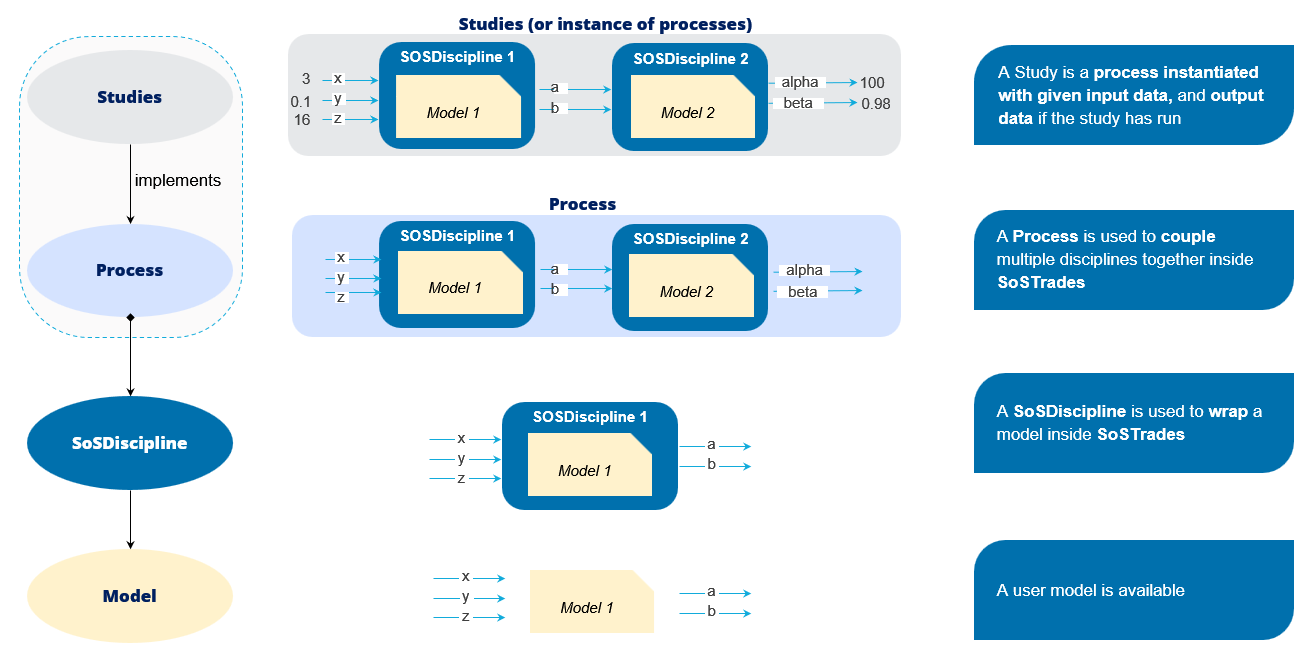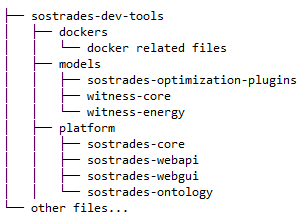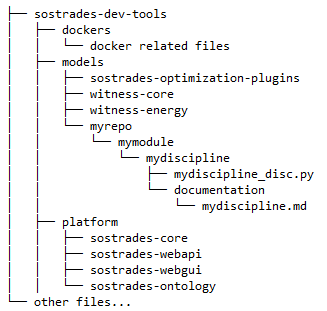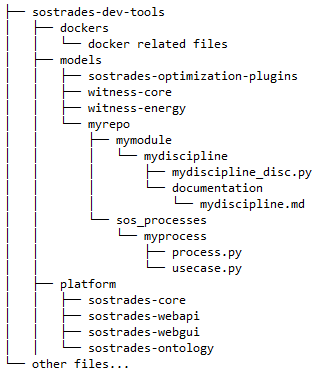Understanding the basics
This is just an overview of the local development files organization, please follow the next sections for detailed disciplines or models creation :-)
From a simple python model to a full study in SoSTrades

As shown in the schema above, in oder to be able to use my model in SoSTrades, I'll need to
-
Wrap my model in an SoSTrades discipline
-
Optionally add postprocessing graphs to display the model results
-
Optionally add test of my model to be able to embark my model in the DevSecOps pipeline (can be ignored if only to be used in local, but still recommended anyway :-)
-
Create a process using my discipline
-
Create a usecase to define default input data for future studies that will be created from this process
-
From there I'll be able to instanciate, run and analyze any number of studies from the process, with various set of inputs
Disciplines
Once installed on your local disk, the sostrades-dev-tools should look like this :

-
under
sostrades-dev-tools/modelsare repositories, and you can add your owns as additional folders here as presented in next sections -
in each repository, you'll be able to add modules folders or folder trees, that are generally used to organize disciplines related to same system or subsystem
-
at 'leaves' of this repository tree of modules, are discipline folders, which SoSTrades will recognize because of containing a file named
<your-discipline-name>_disc.py -
in discipline folders, you can have a 'documentation' optional subfolder in which you can create a
documentation/<your-discipline-name>.mdwith your dfocumentation in markdown format (this documentation will be made available interactively in the SoSTrades tools if it exists)
So if I created a repository "myrepo" with a module "mymodule" and a discipline "mydiscipline", the disk structure should look like this:

(see in the following sections the additional setup to be done to be sure your additional repositories are recognized !)
Processes
-
in your module folder, you can create a
sos_processesfolder to add processes -
for each process you want to create, create a folder in the
sos_processesfolder with the name of your process -
in that
models/<my-repository>/<my-module>/sos_processes/<my-process>folder, you'll need to create aprocess.pyfile describing the disciplines you want to simulate and the namespace in which they interact with others, and ausecase.pyfile initializing the default studies created from your process (that you'll see in the GUI as reference study)
So if I created a repository "myrepo" with a module "mymodule" and a discipline "mydiscipline", and add a "myprocess" process to it, the disk structure should look like this:

init.py files !
A classical error is to forget adding empty __init__.py files
in all folder to be sure they are processed by platform pythonic explorations:
be sure there are __init__.py files in all your folders !